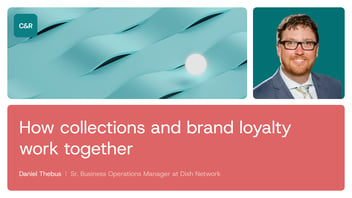Never for C&R—although it sometimes pays off in other areas of operations.
Common wisdom says it usually costs more to build and maintain your own software or to customize generalized software than to buy proven domain- and purpose-specific solutions. Yet we all know of companies that have gained a competitive advantage by overlooking the extra cost to do just that.
[Download this executive brief to find out what happened when a satellite TV and telecom company, a large bank and a major auto manufacturer tried to do homegrown C&R software]
Still many feats of homegrown software-driven businesses focus on streamlining the early stages of customer relationships, such as onboarding and setting up digital services. Managing these types of processes really well is vastly simpler than managing C&R processes really well.
Handling complexity
C&R deals with complexities like payment scheduling/splitting and backdating, interest calculation and adjustments, nonsufficient funds (NSF) and broken promises management, fees, settlements, affordability, loan workouts, bankruptcies, deceased parties, disputes, litigation, fraud, loss mitigation and more. It’s also far more subject to regulatory oversight. Building software or trying to customize a CRM solution to handle all of that smoothly—while delivering an outstanding, regulatory-compliant customer experience—is a massive challenge for any business to take on.
Anticipating behavior
Another difference is that behavior and emotion are far more predictable at the start of customer relationships than at the C&R stage. Most companies are quite adept these days at understanding consumers in their target markets, tailoring interactions to them and generally cultivating the optimistic, cooperative attitude people come into new relationships with. Few companies have the data insights and expertise to understand why individual customers are having trouble paying and to anticipate how they’re likely to respond to collection calls, emails, texts, and letters.
This is where the best C&R solutions really stand out. They provide data-driven insights into what’s likely to happen—enabling companies to finely segment past-due customer populations and know where to focus resources for the best results.
They also incorporate advanced user interfaces, which help agents make the most of every moment during a customer interaction. These largely visual interfaces decrease call preparation from typically several minutes to about 30 seconds. They distill lots of information (including a 360-degree consumer view of multiple accounts) down into a single dashboard-like view which helps agents rapidly comprehend the customer’s situation. Agents say they feel more confident—and can do their jobs in a more empathetic, helpful and efficient manner—when they fully understand what they’re dealing with.
The advanced interface also increases call success by recommending an action—such as updating a payment method, creating a payment schedule or negotiating a settlement—and guiding agents through the process. And collection organizations can easily configure action triggers and automated workflows as well.
Adjusting to change
There is one thing that’s completely the same about software for managing the start of customer relationships and C&R software: They both have to perform in a world of change.
Even a few years ago, many collection operations were able to continue using methods from previous decades. Today, a business-as-usual approach produces abysmally low contact rates and collection results.
So here’s a recommendation to guide your comparison-shopping list: No matter how full-featured and proven, a C&R solution must be fully configurable and extensible, or don’t consider it.
Fully configurable, extensible solutions will fit your organization’s needs at deployment, as you’d expect a homegrown solution to do. They’ll also continue to fit in years ahead—as you gain advancements and innovations with each update while avoiding the high cost and never-ending challenge of maintaining and evolving homegrown software.





